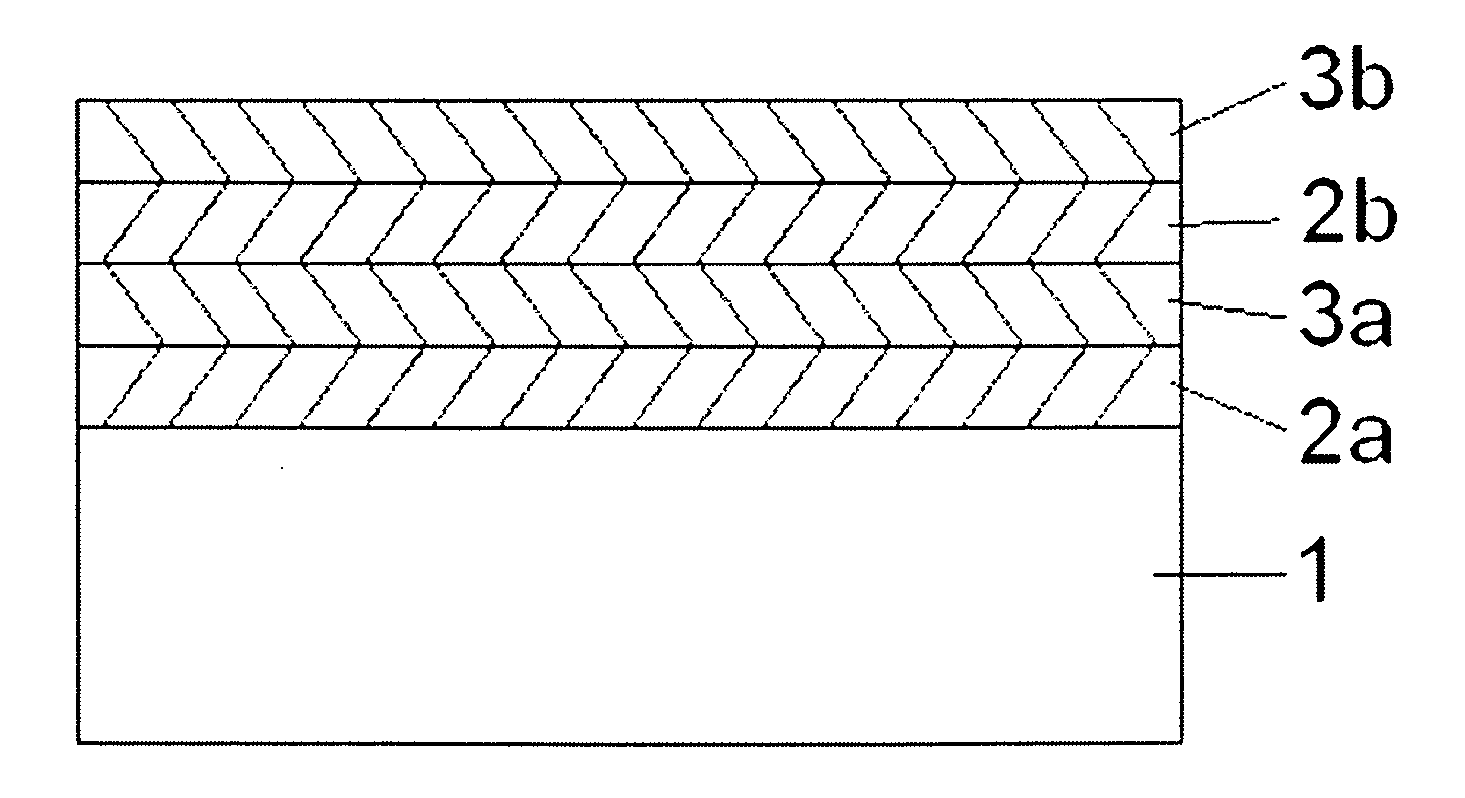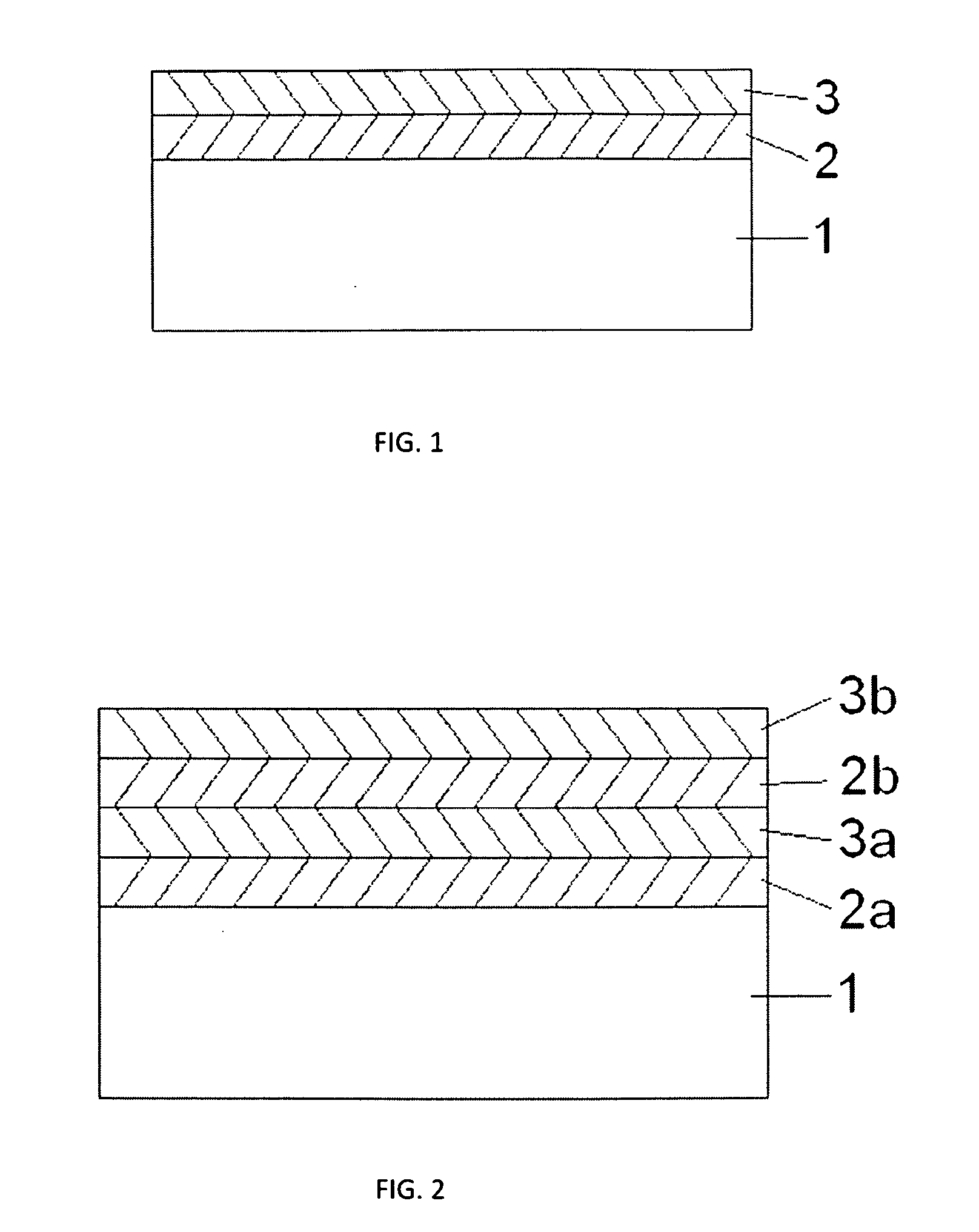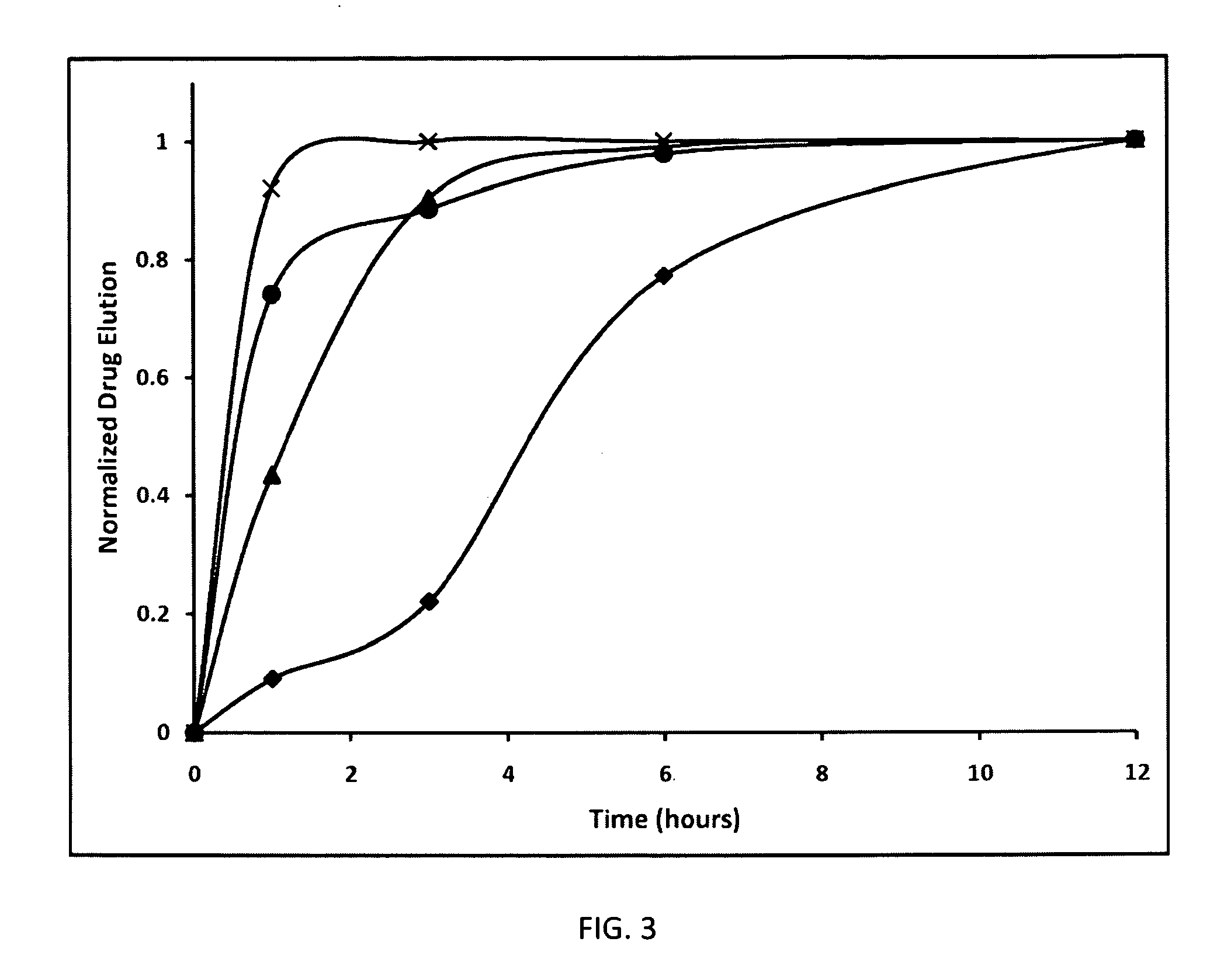Nanofilm Protective and Release Matrices
- Summary
- Abstract
- Description
- Claims
- Application Information
AI Technical Summary
Benefits of technology
Problems solved by technology
Method used
Image
Examples
example 1 -
Example 1-Atomic Plasma Deposition Of Thin Films
[0087]Metal oxide films can be deposited on various substrates by atomic plasma deposition (APD). In a typical example, titanium oxide was deposited in self limiting reactions from a reaction chamber supplied with alternating exposures of volatilized 30% hydrogen peroxide (in water) and titanium isopropoxide, using nitrogen as the carrier gas. To produce the titanium oxide, the following reaction sequence was used: evacuation of reaction chamber to 1×104 Torr; stop the evacuation during a 0.2 sec introduction of hydrogen peroxide into the closed chamber, a 10 second delay during which the vacuum is released, closing of the chamber and a 0.2 second introduction of titanium isopropoxide, then 10 sec delay during which time the chamber is evacuated and the process is repeated. The temperature of the reaction chamber was 160° C. Introduction of the volatilized precursors into the reaction chamber was alternated for 1500 cycles, producing a...
example 2-apd
Titania Films On A Drug Coated Substrate
[0089]Using the APD method described in Example 1, titanium oxide thin films were grown over rapamycin previously deposited on a stainless steel substrate by the MPD method described in U.S. Pat. No. 7,250,195. The APD titania film was grown over the deposited rapamycin by sequential self-limiting reactions of titanium isopropoxide or trimethylaluminum and an oxygen source. FIG. 1 is a schematic illustration of the relative thicknesses of the rapamycin coated substrate and the overlying surface formed from the APD deposited titania.
example 3 -
Example 3-Elution Of APD Titania Coated Rapamycin
[0090]FIG. 3 shows the amount of rapamycin elution from APD deposited titania of various thickness normalized to the control without the APD titania. , ▴, ▪ represent APD deposited titania surface films of thicknesses 25 nm, 50 nm and 75 nm respectively with respective release of the drug over up to about 6 hr for the 25 and 50 nm thick layers and up to about 12 hr for 75 nm thick top layer. The rate of drug release into a PBS / methanol solution is roughly proportional to the thickness of the surface deposited material, at least for layers up to about 100 nm thick.
PUM
| Property | Measurement | Unit |
|---|---|---|
| Temperature | aaaaa | aaaaa |
| Temperature | aaaaa | aaaaa |
| Time | aaaaa | aaaaa |
Abstract
Description
Claims
Application Information
 Login to View More
Login to View More - R&D
- Intellectual Property
- Life Sciences
- Materials
- Tech Scout
- Unparalleled Data Quality
- Higher Quality Content
- 60% Fewer Hallucinations
Browse by: Latest US Patents, China's latest patents, Technical Efficacy Thesaurus, Application Domain, Technology Topic, Popular Technical Reports.
© 2025 PatSnap. All rights reserved.Legal|Privacy policy|Modern Slavery Act Transparency Statement|Sitemap|About US| Contact US: help@patsnap.com



